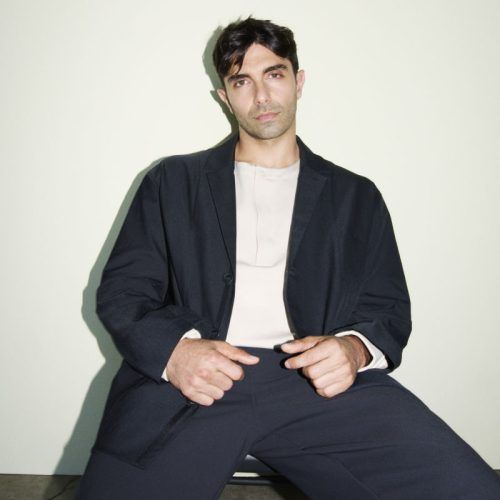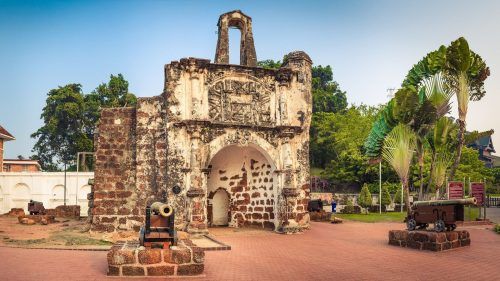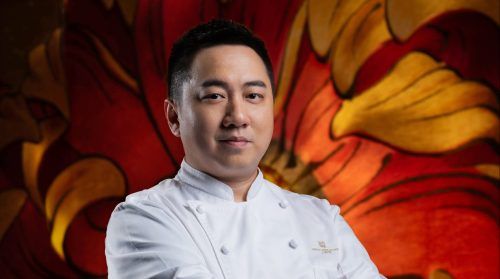I think we can all agree that working in Singapore is exhausting, for the most parts. Growing up in Indonesia, I can never get used to the rigorous pace that is Singapore, despite having lived here for close to a decade — which is about half of my life at this point. There is something about Indonesia that is so laid back and relaxed, a black-and-white contrast to the hustle of Singapore.
At some point of my adulthood and threading working life — it has only officially been a couple of years, but let me have this one — I have come to the realisation that it is suffocating. Many may roll their eyes or tell me, ‘you have barely experienced anything,’ but having a repeated routine for the rest of your life can be borderline anxiety-inducing. That was why I decided, brilliantly if I may say so, on a random Wednesday noon to buy a flight ticket to Yogyakarta (apologies to my boss who will soon realise I bought it during my working hours). I needed a place to escape, somewhere on Earth that I could run away to and ‘disappear’.
When one thinks of travelling to Java, the first destination in mind is usually to the west of the island, where Jakarta and Bandung are. Many tend to overlook central Java, where the Special Region of Yogyakarta resides — a city more commonly called Yogya by the Indonesians. It is the heart of the Javanese culture, a land rich with cultural and ancestral heritage.
However, if you take just an hour-and-half long car ride from Yogya, you will discover an even more overlooked city: Magelang. Located about 45 kilometres away from Yogya, Magelang became the destination of my trip this time, the perfect haven for those seeking the solitude nature has to offer. I settled myself in Amanjiwo, a nook within the nook that is Magelang. Between its jaw-dropping architecture and the green nature surrounding its vicinity, Amanjiwo is beyond a stay.
To know Amanjiwo




Amanjiwo itself is derived from two words: aman and jiwo, each meaning safe/peace and soul. Quite aptly named, Amanjiwo is akin to a hidden sanctuary, nestled in between terraces of rice paddies and a ring of mountains in the distance. It is located a little further away from the main city of Magelang, about half-an-hour ride away, a place untouched by the business of the city and the loud sirens of daily commotions.
It is designed directly across the grandeur Candi Borobudur, the biggest Buddhist temple in the entire world that earned itself a UNESCO world heritage title (more on that later on — I can write about this temple alone for pages on end). Amanjiwo is constructed to be a reflection of the temple; interestingly enough, I learned of this when I visited the temple itself. A guide who had worked there for decades told me the origins of Amanjiwo, “If you draw a straight line from Borobudur, you will reach Amanjiwo. That was the whole design concept of the resort,” the guide, Pak Hatta, had explained. Though he then continued his explanation that the location could not be precisely straight, due to a small, old well that stood in the pathway. Out of respect and the belief that all wells are sacred, Amanjiwo was thus built slightly off-centre to avoid it.
Like a true mirror, the resort mimics the construction of the candi, the Indonesian word for temple. The rotunda lobby acts as the centre stupa, with the resort suites built like its smaller stupas in a step-pyramid formation. There are in total 36 resort-stupas, with two of them being enclosed separately as part of the Dalem Jiwo suite. The rest are built to form half a circle surrounding the lobby. From an aerial point of view, it is like the Borobudur, but halved.
Here is a cultural trivia: for most of the regions in Indonesia, especially in Java where spiritual belief is still held very strongly, hotels would usually leave a room empty, forever locked to prevent any visitors from entering. For Amanjiwo, they simply skipped a room number to symbolise the ‘empty room’. Legend has it that the room is reserved for any spirits or beings that may wish to visit the vicinity. Take a stroll next time, and perhaps you will spot the ‘missing resort’.
Stepping into the sweet suite




Amanjiwo offers five types of suite, and the Garden Pool Suite became my home for a couple of days. Boasting a spacious dimension of 243 square metres, the suite houses a central four-pillar king-sized bed, raised on a terrazzo platform. It features a bathroom with twin vanities — one for the gent and one for the lady with different amenities to suit each needs — and a private outdoor bathtub for a warm, relaxing soak under the sun. Personally, I had enjoyed it more at night, where the dark sky became a blank canvas for the stars to shine and admire. The suite provides an aromatic bath salt that makes the perfect accompaniment to the tub, alongside the occasional crickets of the geckos and my soft jazz playing from the speaker in the room.
Right outside the suite, is a 6 metre private swimming pool facing the breathtaking views of the green scenery enveloping it. With a private walled garden and a pavilion to rest, it makes for the perfect quiet shelter to recharge and reconnect with nature. I had spent my mornings simply admiring the valleys that seemed to stretch for as far as my eyes could see, void of any metropolitan disturbances. Instead, birds chirped and butterflies fluttered by, beetles buzzed along the garden flowers for their daily sustenance — as was I who enjoyed my daily fruit bowl of duku and manggis, courtesy of the hotel. It was so peaceful that all I heard were the rustling leaves and gentle breeze, something I had not seen nor able to appreciate for the longest time in the modern city.
The culinary opulence


The resort provides distinctive dining experiences, with a terrace restaurant facing the planes of Borobudur and a pool-side restaurant, tucked in the midst of rice paddies and Selogriyo temple. The ingredients are handpicked by the resident chefs, sourced from the resort’s own organic garden as well as the local farms around the complex.
As a true Indonesian, I cannot help but boast about the Javanese cuisine served in the Restaurant. I had my breakfast of nasi godog — a hearty rice cooked with fresh vegetables and chicken in an egg drop soup — at the Terrace, overlooking the entire Kedu Plain as volcanic mountains emit smoke in the background. For my dinners, I had opted to dine in the Restaurant, where authentic Indonesian and Javanese cuisine will tickle your palette. From its vast menu, I would recommend the gudeg, a traditional Javanese dish of unripe jack fruit stewed with Javanese sugar and coconut milk. Amanjiwo serves it dry-style, which makes for an interesting culinary exploration for the unfamiliar.
For those seeking a much more bespoke experience, book a private dining experience at Pak Bilal’s house, whose candlelit Javanese home makes for the perfect setting to enjoy a traditional Indonesian feast. With ingredients sourced from nearby communities and a menu catered to the guests’ preference, the experience is truly like no other. I will refrain from spoiling what the multi-course menu entails, but the paired kunir asem martini was a work of art.
Experiencing Java
Candi Borobudur





Dubbed as the world’s largest Buddhist temple, Candi Borobudur remains one of the world’s wonders that never ceases to attract visitors from across the globe. The 9th-century Mahayana Buddhist structure is located just about 10-minute complimentary car drive away from Amanjiwo, making it convenient for the residents of the resort to visit. The resort is also able to arrange for a VIP 1-on-1 tour experience. Led by a local Borobudur guide, the tour allows visitors to explore the steps of the temple and learn more of the hidden Buddhist relics.
One can also enjoy the marvellous view of Borobudur right from the resort. I had woken up at six in the morning — by the suggestion of the tour guide, of course — to view the temple surrounded by the morning fog, giving the illusion of a floating temple. Since its structure stands taller than the buildings surrounding it, the view of the main stupa drifting in the midst of the morning mist is simply magical.
In and out of home



Amanjiwo offers a holistic experience that is similar to how a common Indonesian household would live their daily life. For one, there is daily traditional afternoon tea served in the lobby, where guests can enjoy an assortment of kue and pastries next to a cup of warm ginger tea. To accompany the tea is an afternoon activity, which changes roster every single day to offer a wider experience for guests. I happened to be able to participate in a batik making class with Ibu Rita, who is a professional batik painter living in a village nearby. Trust me: it is much harder than it appears. She just made it seem easy.
Amanjiwo is also located near numerous villages and art galleries, all reachable by bike or car. For the ones who are more daring, you can rent a mountain bike free of charge to explore the villages nearby, and learn the art of living: making tofu, pottery, and even glass noodle, among the many. Just ask the receptionist for a vintage, illustrated map to aid you in your adventure.
Spirituality and wellness

It is not an Aman property if it does not pride itself in looking after one’s spiritual and mental well-being. Equipped with a deluxe spa experience, private gym, and in-house yoga instructor, I was truly spoiled for choices when it comes to relaxation. Try your hands in jemparingan, a traditional form of archery from Yogyakarta. Even with a guide helping me, it still was quite the interesting challenge.
However, one experience that truly made its mark in my heart is ruwatan. Ruwatan is an ancient Javanese ceremony, meant to ‘cleanse’ and dispel any negative energy and bad luck. Under the guidance of the renowned spiritual and healer-shaman Joko Triagung and resident anthropologist Patrick Vanhoebrouck, I spent my early morning in a surreal, meditative experience right by the banks of the Progo River, where I learned of the origins of ruwatan and the processes of the ritual. It was then followed by a breakfast picnic at the same location, with a spread of chosen cuisine reserved the day before. Needless to say, it was healing, calming, and simply serene.
Uncovering heritage
Once you have had your fill of the breathtaking views of Magelang (I wonder if one ever can), take a 90-minute private car ride down to Yogyakarta, where the city is alive with cultural heritage and traditional artistry. Amanjiwo brings you back to the past with a visit to the Royal Palace of Yogyakarta, also known as Keraton Yogyakarta. Yes, you read that right. Yogyakarta is the only region in Indonesia that is still headed by a recognised monarchy system, hence its incredibly rich cultural inheritance.
A tour to the Keraton begins with a Keraton Royal lunch, where guests can choose from a selections of dishes once served (and were the favourites) of the first Sultan of Yogyakarta. Served in the home of the prince, I was able to savour a selection of dishes with recipes dating decades back. One of my favourites was recommended by the staff in Amanjiwo, songgo buono: a Javanese-Dutch dish of pastry and egg, topped with a special mix of hollandaise sauce.
Right after is a visit to the Keraton Yogyakarta, where guests can experience the secrets of chronograms. Named Sengkalan, it is a traditional method used in inscriptions to signify a given year. The session is hosted by the Royal Historian of Keraton Yogyakarta, where he explains how certain words were assigned a specific number. I was honoured to be written a poetic phrase based on my birthdate and well wishes from the historian, and I eventually had a hands-on experience of penning the sengkalan down in the traditional Javanese script. It was enriching and eye-opening for me; Javanese script is not often used in the modern context, so learning it firsthand from the Royal Historian is truly an experience like none other.
Simply put, there is no limit to how much I can write about my experience in Amanjiwo. Every day is a new experience; new lessons to be learned, new people with new stories, new sights to behold. I think what makes Amanjiwo truly special, beyond its exceptional facility and first-class hospitality, is the community built around it. Amanjiwo deeply values the residents nearby, always inviting various artists and craftsmen to visit the property and impart their art to the guests. The uplifting spirit of familial harmony is strong, the true mark of a humble Javanese culture. ‘A heaven on earth’, will be how I describe it.













